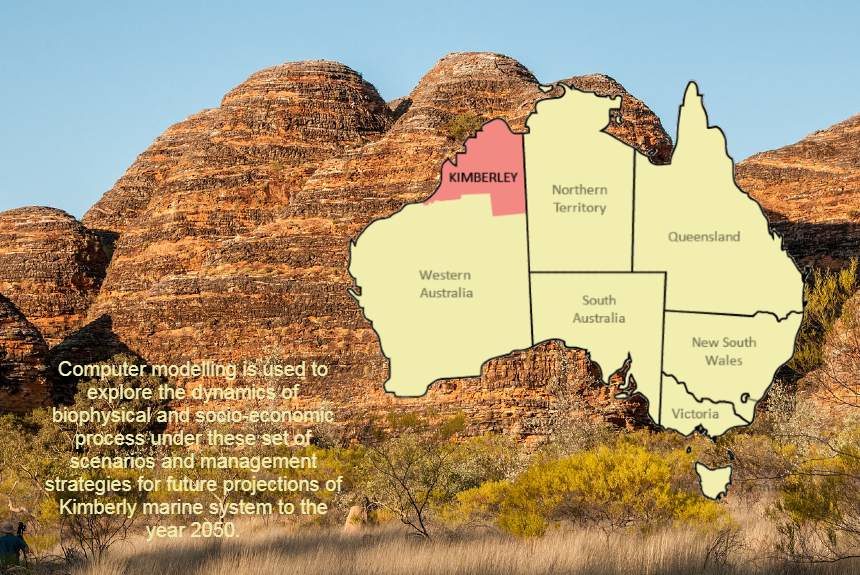The study addresses the question of how to provide meaningful scientific information to support decision-making at a regional scale. The researchers studied the networks of marine parks in Kimberly regions of Western Australia (WA) where environmental sustainability is affected by the slow effects of climate change and one-off investments in infrastructure impact the region for decades to come.
Coupled marine and terrestrial models are used to project the Kimberly marine system to the year 2050, it shows that climate change more than the economic development is the largest factor affecting the future of marine ecosystems in the Kimberly region with site-attached reef fish at greatest risk.
The Kimberly regions of WA comprises of 420 thousand sq. km of land and marine waters. It is known for its remoteness, physical beauty, diverse ecosystems and biodata, and rich Aboriginal history.
The area possesses considerable natural resources, food production from agriculture, fishing, and aquaculture, and the growing tourism industry.
Both state and regional governments want to protect population growth, economic activity, and natural resources, and cultural heritage for the future. Zoning was used on land and marine areas to support coastal planning and reserve management.
The study identified three challenges to coastal planning and research management:
- Economic development in a sparsely populated area where a permanent nature of one-off large infrastructure investment can hinder adaptive management and beyond the control of local management authorities;
- Marine Protected Areas (MPA) which are subject to the complex political process;
- and thirdly, the slow onset of climate change which can affect the generation of feedback for adaptive management.
Management of the Kimberly marine environments and its network of marine parks will need to address issues that are under the control of their local management authorities as well as those beyond their control.
Those that are beyond their control are not suitable for adaptive management and hence the approach is borrowed from the Future Studies and Foresight literature which complements the traditional approach.
Adaptive management and future studies are considered to have complementary roles in conservation problems. Adaptive management allows adjustments and improvements to management. Future studies allow decision-makers to imagine and assess the long-term consequences of decisions, which are hard to reverse or processes that are beyond control.
The project’s stakeholders identified climate change and population growth as the two factors with a large impact on the future of the region.
The study explored intensities of these two factors, which resulted in 18 scenarios with varying levels of climate change, development, levels of dryness and precipitations that capture uncertainties in predicted precipitation regimes.
Then, the study asked stakeholders for a set of available management strategies to achieve their goals for attaining environmental sustainability, economic growth, and resilience to climate change.
Finally, computer modelling was used to explore the dynamics of biophysical and socio-economic process under these set of scenarios and management strategies for future projections of Kimberly marine system to the year 2050.
CLICK on the button below to read the full study:
Source citation:
Boschetti, F., Lozano-Montes, H. & Stelfox, B. Modelling regional futures at decadal scale: application to the Kimberley region. Sci Rep 10, 849 (2020). https://doi.org/10.1038/s41598-019-56646-x



Leave a Reply